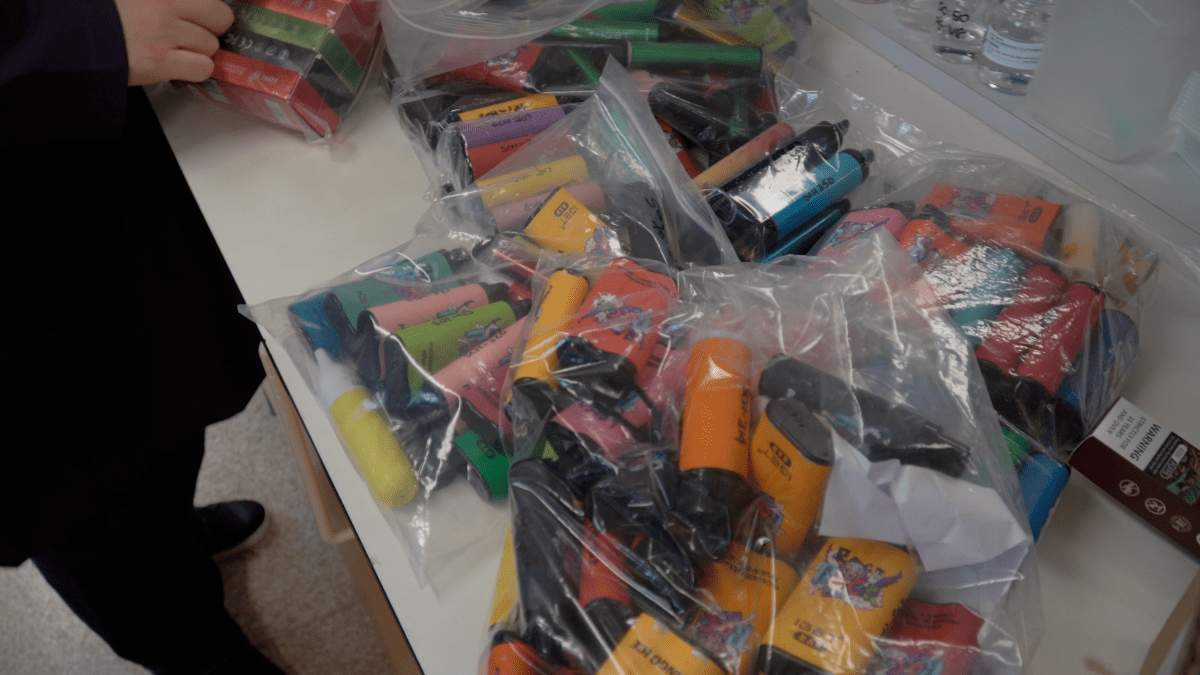
For many young Aussies, vaping has transformed from a casual bit of fun into a widespread addiction, and let’s be honest, it can be a pretty daunting challenge when it comes to breaking free from the sticky grip of nicotine.
So how do you actually quit vaping? And what are the best tips and tricks for kicking your habits, and literal vape, to the curb?
In the last instalment of Vape Nation, we delve into some of the best tactics for quitting, certified by expert advice and young people who have quit for good.
Understanding Vaping Culture In Australia
One in five young Australians aged between 18 to 24 have vaped in the past six months, according to the Generation Vape report, and we’re being drawn in by the allure of sweet flavours and then hooked by the highly addictive nature of a nicotine-laden vape.
What began as a source of comfort for many young people who were stressed about the cost of living crisis, housing crisis, climate crisis, one of the other numerous crises going on, or just wanting to have fun by trying something new, vaping has swiftly evolved into a full blown dependency.
Rachel, aged 23, told PEDESTRIAN.TV she started vaping at age 20, initially as a form of comfort and then socially with friends. It wasn’t until she moved interstate for university that she realised she’d become addicted.
“I think I went a week [without having a vape] and then I ended up having a serious mental breakdown,” Rachel told PEDESTRIAN.TV.
“It felt like there was something over me and I couldn’t breathe properly. So I think I was having a panic attack when I didn’t have it. So I had to go to the shops to go and get it.”
“It was then I was like, ‘oh my gosh, I’m actually addicted to this’ and that was when I realised. Before I was like, ‘oh, I can just give it up whenever because it was always around me with my friends, so I never really thought about it,” said Rachel.
How Did Vaping Become So Big In Australia?
Rachel’s story isn’t unique and has become a common experience for many young Australians. Our origin stories with vaping often start out the same way, where we’re just handed a vape at a house party or pub without realising that an addiction could be on the other side, and it doesn’t help that they’re everywhere.
Vapes have popped up like mushrooms and have exploded into a full blown vaping culture in Australia.
“I think it just snuck in under our noses,” said Professor Claire Wakefield, Director at Minderoo Foundation.
“I think we may have been a bit distracted by other things like COVID for example in terms of the health system and it was just insidious in terms of the way it was marketed and then the way that young people took it up.”
She described vaping as the “quiet epidemic” that has ballooned into an enormous health challenge, and now years into the vaping epidemic we’re on the back foot trying to fix it.
An initiative that has set out on making change is the UnCloud campaign from Minderoo Foundation. 11 young Australians have opened up about their personal experiences with vaping and hits on the need for candid conversations about the realities of vaping culture in Australia.
Their experiences range from being addicted, to loving someone who is experiencing a vaping addiction, and sets out to amplify the message that it’s easier to say no than to battle a nicotine addiction.
Research from the UnCloud campaign discovered that there’s a disconnect between how much young Aussies think they’re vaping vs how much they’re actually doing it.
Three quarters (75 percent) of 14 to 25-year-olds believe vaping is somewhat or very common among their friends, but in reality, just 32 percent of their friends have vaped in the past 30 days.
“Although a lot of young people now say that they are addicted to vaping, which is a shame, about four in 10 were saying ‘I feel addicted’, six in 10 were wanting to quit already,” Professor Wakefield told PEDESTRIAN.TV.
“So it might be that young people are starting to make that decision, and thinking maybe it’s not right for me, and so that’s very new data and a positive sign that we might see a whole bunch of people try and quit.”
So how do you actually go about quitting?
How To Quit Vaping For Good
Quitting vaping is no easy task. It’s fraught with both physical and psychological hurdles. Giving up nicotine can make you feel depressed, irritable, anxious, affect your ability to concentrate and sleep, and even make you constipated and gassy. However there are methods you can follow that can make this bumpy ride a little smoother.
A common method is the ‘cold turkey’ route, where you put your vape down and never touch it again. It’s by no means a fail-safe method, with studies on quitting smoking showing just five percent of people were able to quit this way.
So if you’re like the other 95 percent of people where going cold turkey won’t work, one of the best things you can do is make a plan. Quitting is going to be hard, so if you can plan how you’re going to quit you’re in the best spot to set yourself up for success.
“If you’re thinking about quitting or wanting to, you’re already halfway there. It’s the mental [part], that’s the hardest thing to overcome [but] to actually physically quit you need to want to do it. If you don’t want to do it, there’s no point,” said Rachel.
Another tool in your quitting toolbox is to physically vocalise your intentions of wanting to quit. Telling a friend can be a powerful way to make your goal feel real and gives you someone to seek support or accountability from in those tough moments.
Once you’ve made the decision of wanting to quit, set a date that you want to start this journey on. If you have a big event coming up that you know you’ll be tempted to vape, set your quit date for after that event. It’s your journey, so you get to set the parameters and rules, including when it starts.
Another important part of quitting is reducing the amount of nicotine that’s in your system, and this starts by not having a vape on your at all times, as well as reducing the times you’re able to use your vape.
Rachel set up allocated days that she could vape, and then transitioned into specific hours on those days she would allow herself to use it. By reducing your nicotine intake gradually you won’t feel the full freight train of symptoms that could hit you by quitting cold turkey.
If you think you’ll be too tempted by having a vape near you there’s also nicotine replacement therapies, like nicotine gum or patches that will ease the transition away from the dependency.
If you don’t want to use these some people can find exercise or chewing non-nicotine gum as a great distraction when those cravings come out to play.
Being in situations where vapes are easily accessible can be the one of the hardest spaces to be in when you’re trying to quit. Physically removing yourself from a space can feel like a lot but if you are feeling incredibly tempted, it’s a helpful tactic to keep in the back of your mind.
Rachel noted that having a daily count app on her phone to mark the amount of days she had gone without vaping was invaluable during her quitting journey, as it served as a boost of motivation and accountability as each day passed where she hadn’t vaped. She’s now over 6 months vape free, and incredibly proud of her achievement.
Wherever you’re at on your quitting journey make sure to celebrate your wins. This isn’t going to be easy, but each day you go without it will be easier than the last.
Most importantly make sure to be kind to yourself and if you do relapse it’s okay as you can always start again.
Thousands of young people across the country are setting out to quit vaping. So if this is you, you’re just one of many people going through this challenge and if you feel like you can’t do it just remember it is absolutely possible to quit vaping for good.



